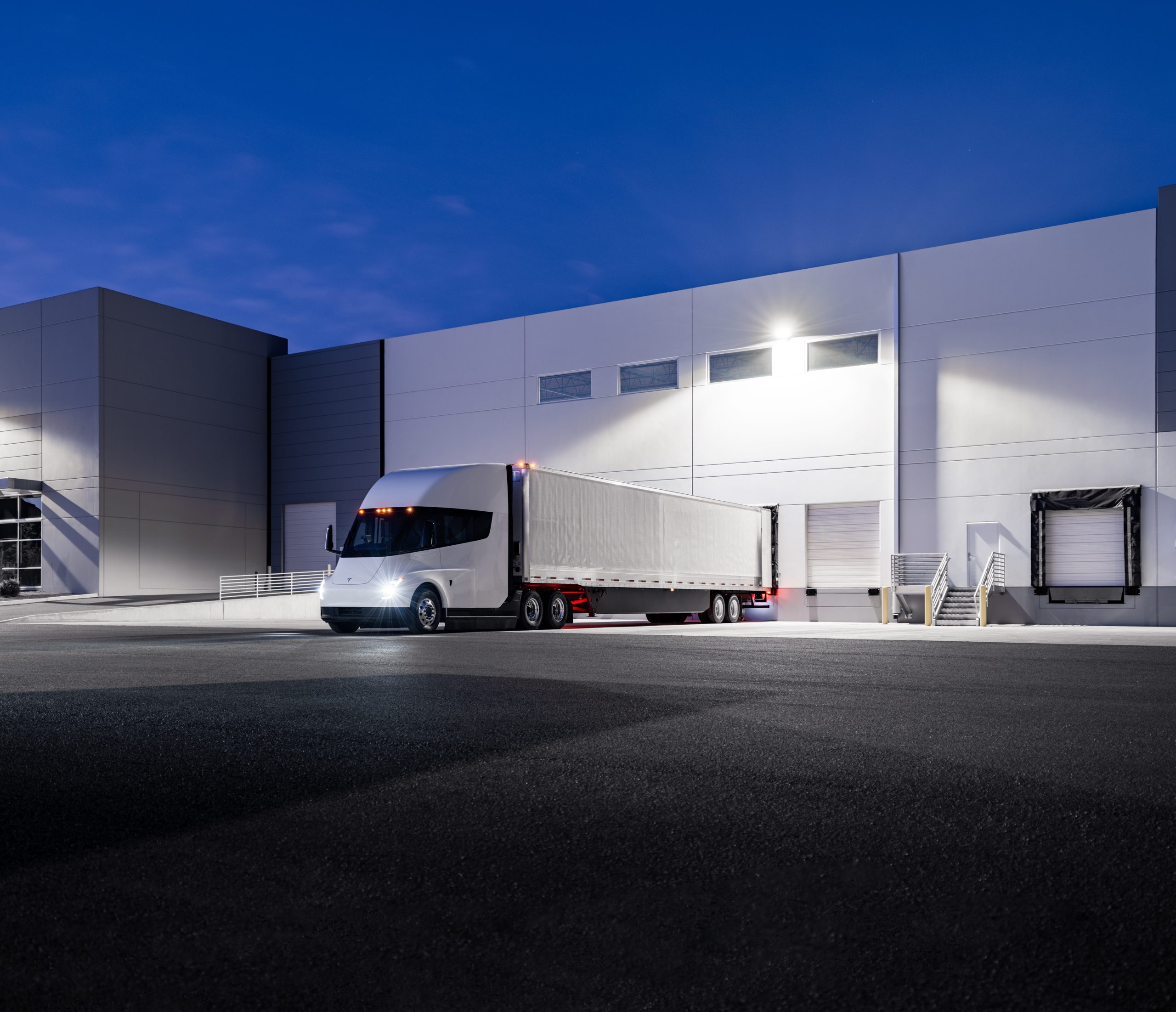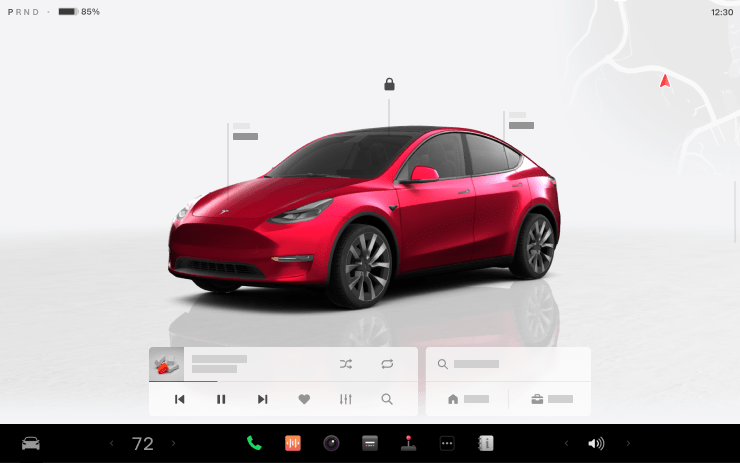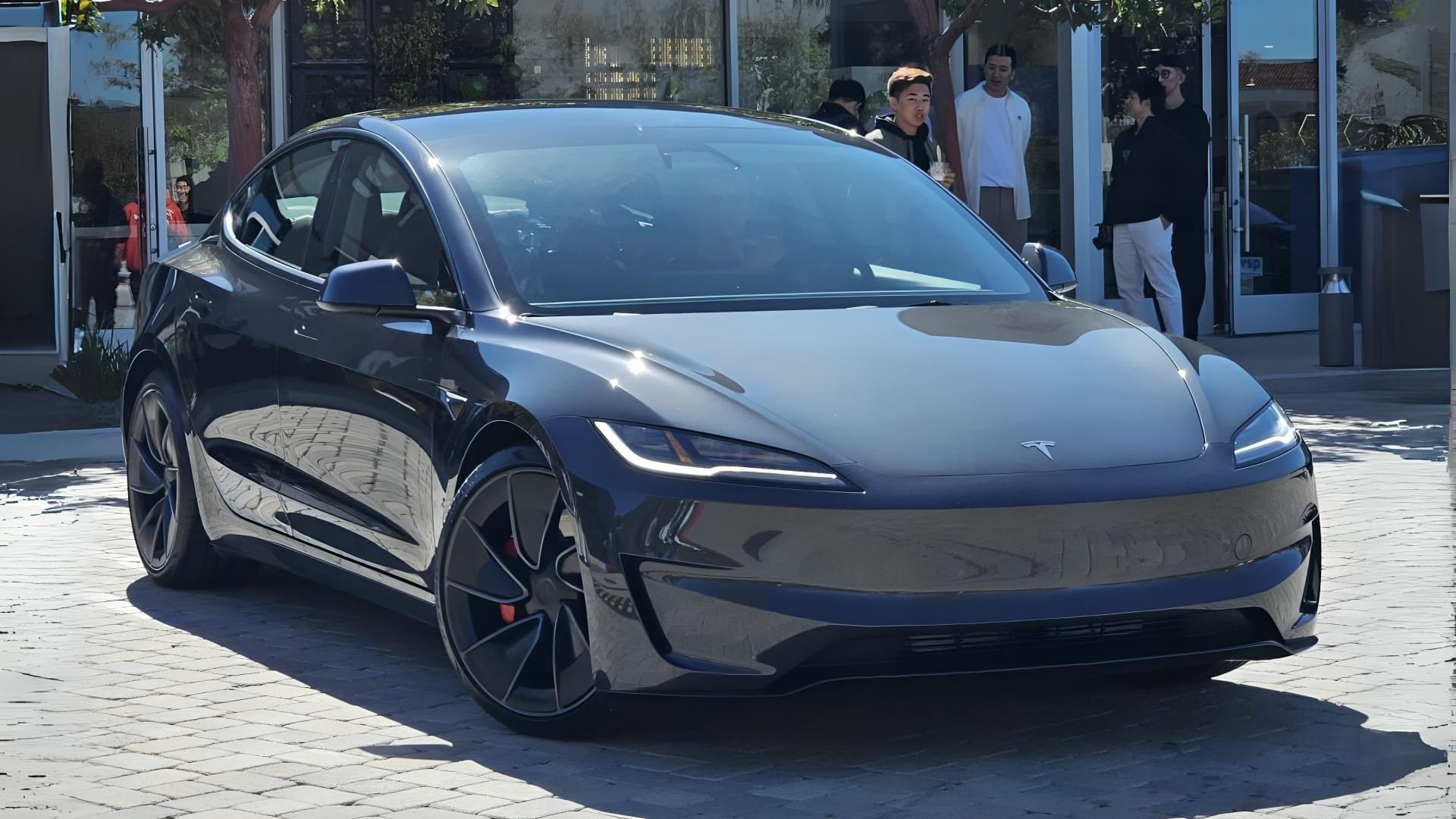Tesla's Major Adjustment: The Disaster Brought by Going All In, and Solving it by Going All In
Model Y and Model 3 need to hold on for at least two more years.
Until March this year, various departments at Tesla were still discussing the mass production plan for the new project "NV91." For the employees involved, this was not only about work but also a secret weapon to save their stocks.
A year ago, Tesla CEO Elon Musk announced at a shareholders meeting that a budget-friendly car would be mass-produced by the end of 2024. He believed that this model alone could sell 2 million units annually, potentially making Tesla bigger than Volkswagen and Toyota combined. According to information previously obtained by LatePost, the new vehicle "NV91" had already entered the mass production verification stage in the summer of 2023.
Tesla desperately needed this product. The futuristic new car, Cybertruck, was facing production challenges and was expected to produce only 60,000 units this year. The sales leader, Model Y, which had been on the market for 5 years, saw a decline in sales. In the first quarter of this year, while the S&P 500 index surged by 10%, Tesla's stock price fell by a third.

The "NV91" vehicle is shrouded in mystery, as outlined in Tesla's "Master Plan 3."
Tesla's supply chain partners in China have been eagerly anticipating this development. Over the past two years, dozens of key suppliers, holding Tesla's tentative orders, have been recruiting and building factories in Mexico in anticipation of the completion of Tesla's Mexican factory.
The plan was for the Mexican factory, tailored specifically for "NV91," to be smaller in size yet more efficient than Tesla's Shanghai factory. This efficiency was expected to reduce the cost of Tesla's flagship products from the $35,000 (approximately 250,000 RMB) price of the Model 3 to $25,000 (around 180,000 RMB). Musk has long believed that the only thing stopping consumers from buying Tesla cars is their high price, and the solution lies in using new materials and manufacturing methods to improve production efficiency.
However, the Mexican factory was soon delayed. Last year, several Tesla suppliers told LatePost that the new factory's production had been postponed to the first quarter of 2025. Tesla's history of significant delays with every breakthrough product meant suppliers were not overly worried. At the time, many believed that insufficient local infrastructure development in Mexico was slowing progress.
On April 5 this year, Reuters reported that Tesla's senior management had secretly canceled the "NV91" project in February without informing employees and suppliers. Musk quickly accused Reuters of spreading false news on his social media network, X. However, Tesla's lower management had not received any further updates about the project; no pauses, cancellations, or continuations, leaving them to follow the project's developments and their futures through what Musk called "fake news."
Last Saturday, Tesla employees discovered news of imminent major layoffs on an external anonymous social media platform. Based on their experience, they expected to find out who would be laid off within a month. However, on Monday morning, they received a company-wide letter from Musk about the layoffs.
In his letter, Musk stated that Tesla had "conducted a thorough review of the organization" before proceeding with the layoffs. However, several Tesla employees contacted by LatePost described the layoffs as rushed, with no handovers or notifications. "The layoffs seemed to randomly select people, including many high-performing, long-term employees," one said.
A Texas factory engineer, preparing for a business trip, received an email notification of his layoff minutes after reading the all-staff letter, unsure of how to hand over his responsibilities and return his computer. Another engineer from the Texas factory realized he had been laid off only when his access card failed to work the next day at work, despite having attended a project discussion meeting the day before.
"I don't understand. Those unprofitable car companies aren't making major layoffs, yet we're cutting 20% after making so much profit in a year," one laid-off engineer told LatePost. Currently, only Tesla and BYD are profitable among companies focusing on all-electric vehicles.
Based on the employee count at the end of 2023, this round of layoffs affected about 14,000 people. Some departments faced layoff rates exceeding 10%, and the two engineers estimated that layoffs in Tesla's battery department approached 30%. According to reports by Phoenix Network, some departments in Tesla China saw layoffs exceeding 30%.
Chinese suppliers saw ominous signs earlier than Tesla employees. LatePost learned that the Mexican factory had been delayed until 2026 at the beginning of the year. Now suppliers could no longer count on the plan being executed as originally intended, though their factories had been completed.
Tesla's employees, suppliers, shareholders, and Musk himself have all paid a heavy price for the company's disastrous start this year.
In 2022, Musk raised $46.5 billion to acquire Twitter, a significant portion of which was obtained through pledging his own stocks. According to Tesla's filings, by the end of March 2023, Musk had pledged 58% of his stocks, totaling 238 million shares worth over $40 billion.
During the six months Musk pushed for the Twitter deal, Tesla's stock price peaked at $384 and dropped to as low as $198 — about 22% higher than it is now. If Tesla's stock price continues to plummet, and Musk is unable to make additional payments to the lending institutions, his pledged stocks might be forcibly sold, potentially causing a vicious cycle. "Any such sales could further depress our stock price," stated Tesla's annual report.
The problems that lead a company into trouble are typically rooted in mistakes made years earlier.
The Cybertruck is again in production hell, and sales of Model 3 and Model Y are declining, with the potential abandonment of a new budget-friendly car... All these are merely outcomes of a disaster whose causes all occurred five years ago.
The seeds of the issue were planted back in 2019.
In 2019, Tesla emerged from the Model 3 production crisis and turned a profit in the third quarter. It sold sufficiently long-range electric vehicles at a price of $35,000, making them accessible to ordinary consumers.
Months later, engineers from Tesla and die-casting machine manufacturers worked overnight at the Shanghai factory. With no windows in the workshops, engineers often worked past midnight, leaving behind piles of scrap. Within six months, they had mastered a new era of integrated die-casting car bodies, reducing the cost per vehicle by 5,000 RMB, helping the Model Y become the world's best-selling model three years later.
With everything going well, Musk tackled his own pet peeve, "boredom," by launching the all-stainless steel-bodied pickup, the Cybertruck.
According to the "Biography of Musk," when the Cybertruck was finalized, some Tesla executives questioned the futuristic design choice for a pickup. Musk dismissed concerns about market acceptance, stating he "did not want to make a traditional, boring pickup that could be made anytime."
The Cybertruck marked the beginning of a disaster for Tesla. Its cool design came at a cost: the vehicle couldn't be manufactured using traditional techniques. Mainstream auto bodies are made from aluminum alloy, stamped from fixed molds in a single step, but stainless steel panels are too hard for this method. They require laser cutting, bending, and then welding to form the body.
This new process was highly imprecise, resulting in vehicles with gaps as wide as a finger at joints, even on models received by Marques Brownlee, YouTube's top tech product reviewer.
The situation worsened with efficiency issues. The Cybertruck was delayed by three years, only starting mass production and delivery at the end of last year. A Texas factory engineer told LatePost that the new truck couldn't produce more than 200 units a day, and it would take until 2023 to deliver to all those who pre-ordered, with an annual output of fewer than 70,000 units.
"We dug our own grave with the Cybertruck. It had too many bells and whistles," Musk said during a Q3 earnings call in 2023.
The 4680 battery, prepared for the Cybertruck and a budget car in 2020, intensified Tesla's struggles.
The 4680 battery was central to Tesla's expansion plans. With the pandemic impacting the supply chain, batteries then accounted for over 40% of an electric car's cost, with insufficient production capacity. Tesla hoped to reinvent the battery structure by eliminating the most time-consuming steps.
Tesla was initially optimistic about the 4680 battery's progress, expecting mass production to be feasible by 2021. If achieved, Tesla's batteries would have had better performance and cost-efficiency than those from CATL and BYD.
However, due to engineering challenges, the battery has not yet reached mass production. Insiders say the production efficiency of the 4680 batteries is only a third of what was expected, their energy density is 20% lower, and the cost is much higher than Musk's targets. Meanwhile, CATL and BYD have improved their lithium iron phosphate batteries to be cheaper, faster to produce, and close the gap in energy density. With lithium prices plummeting and overcapacity in China's battery industry, the 4680 has lost much of its relevance.
LatePost exclusively learned that by the end of last year, Tesla began discussing switching to lithium iron phosphate batteries from CATL and LG for its budget cars. LG has since invested heavily, hoping to mass-produce these batteries in the second half of the next year. CATL also began collaborating with Tesla early this year to build a lithium iron phosphate battery factory in Nevada.
These changes likely signify a phased failure of the 4680 battery project.
Hours before Musk announced layoffs, Drew Baglino, the VP of Powertrain and Energy Engineering at Tesla, who was responsible for the 4680 battery mass production, resigned. Electrek reported that several of his subordinates were also dismissed.
Several engineers involved in the 4680 project expressed their pessimism to LatePost. Some had started job hunting early this year, and others never believed in the feasibility of mass-producing the 4680 battery.
"The problem with Tesla is not that we have too many people; it's that we have too few," one engineer commented about the delays in the 4680 battery project. LatePost learned that the 4680 battery R&D team has only about 100 people, whereas similar-scale mass production tasks at Chinese battery companies typically employ over 1,000 people and work 1.5 times the hours of Tesla engineers per week.
Musk despises inefficiency and considers middle management a key cause of it. In an early internal email at Tesla, he criticized the reliance on managers for information flow as "extremely foolish." He urged Tesla employees to disregard their immediate superiors if they could solve problems faster by directly communicating with other departments' vice presidents or himself.
"Many Tesla middle managers don't last two years. They either get promoted because they're geniuses or they're fired," an engineer said.
This culture allows Tesla to maintain extremely high employee efficiency. Tesla's FSD (Full Self-Driving) team consists of just over 120 engineers, while competitors need hundreds or even more than 2,000 people, yet their products are still not as advanced as FSD. After acquiring Twitter, some senior FSD engineers even helped audit code to determine who should be let go.
However, this culture makes it difficult for Tesla to tackle manufacturing challenges that require extensive repetitive work and prevented the company from developing new models during the three years of Cybertruck delays.
Currently, Tesla still relies on the Model 3 and Model Y, which have been on the market for eight and five years, respectively, to sustain its sales volumes. Tesla recently denied plans to launch a redesigned Model Y by mid-year. In the first quarter of this year, Tesla's deliveries fell by 8.5%, marking the first decline in nearly 15 quarters.
LatePost learned that by the end of last year, Tesla's orders to some suppliers had only increased by 20% from 2023, the lowest annual increase in years. Yet, by the first quarter of this year, Tesla had further reduced its purchase orders. A multinational battery supplier was asked by Tesla to reduce supply quantities.
After this round of adjustments, the Model Y and Model 3 must continue for two more years.
The disaster brought by going all in is to be solved by going all in again.
Following Reuters' early April report on Tesla's cancellation of the "NV91," Musk announced on social media the launch of an autonomous taxi (Robotaxi) on August 8.
Musk's stance on autonomous driving directly influences Tesla's new vehicle planning. According to the "Biography of Musk," in 2021, when Tesla was planning new models, Musk insisted the next vehicle should lack side mirrors, pedals, and a steering wheel. Only by the end of 2022 was he persuaded by Tesla's executives to approve mass production of a smaller, more affordable mainstream vehicle than the Model 3.
But Musk still believes that autonomous taxis will revolutionize the industry, not only freeing people from the burden of driving but also eliminating the need for individuals to own cars. In his vision, it would work like today's ride-sharing services; whenever you need a car, you could summon an autonomous taxi that would take you to your destination and then move on to the next passenger. He thinks Tesla could become a $10 trillion company by leveraging autonomous taxis, pushing for new vehicle designs and factories to accommodate both the production of budget cars and autonomous taxis.
Executives are more concerned about the progress of autonomous driving and hoped for transitional products. They and many analysts believed that a consumer-oriented budget model could replicate the success of the Model Y, capturing the biggest opportunity in the wave of automotive electrification.
As market growth slows and competitors catch up, Tesla shows signs of fatigue. While Tesla still hesitates to produce a $25,000 budget car, Chinese competitors have already reduced their prices to around $10,000. Musk himself admitted, "Without trade barriers, Chinese electric vehicle companies could destroy most of the world's competitors."
The slow progress in autonomous driving technology led Elon Musk to concede in the latter half of 2022 that achieving full autonomy was more difficult than anticipated. However, a few months later, the release of ChatGPT by OpenAI, which he supported, renewed his confidence. A month after that, Tesla's autonomous driving engineer Dhaval Shroff presented Musk with a still-conceptual new version of the autonomous driving system, describing it as "like ChatGPT, but for cars."
Traditional autonomous driving systems rely on predefined rules to guide vehicle movement. In contrast, Tesla's innovative "end-to-end" autonomous driving gathers millions, if not tens of millions, of segments of driving data in complex road conditions to train models that learn how to navigate such environments. Consequently, the new system might "break" traffic rules when necessary, such as crossing solid lines.
Inspired by this, Musk instructed his team to train the new versions of the autonomous driving model in this manner. A year later, Tesla rolled out the v12 version of its Full Self-Driving (FSD) system. Many owners felt the new system drove more human-like, recognizing roadblocks, understanding pedestrian gestures, and handling narrow passings more adeptly. Even its flaws resembled those of human drivers, such as frequently missing curbs while parking, resulting in scraped rims or tires.
Tesla believes that greater computational power and more driving data will yield a stronger autonomous driving system. A Tesla insider told LatePost that starting from the latter half of last year, building the Dojo data center to train the large-scale autonomous driving model became Tesla’s most crucial project. Musk announced this year that he would invest billions of dollars into it. Since April, Tesla has halved the price for FSD to boost subscriptions and increase training data.
Whether this strategy will quickly realize Musk's vision of Robotaxis remains uncertain. In early April, Tesla removed the "Beta" label from FSD, renaming it "Supervised" to remind owners that driver intervention is still necessary.
Philip Koopman, an assistant professor at Carnegie Mellon University who studies autonomous vehicle safety, stated, "Clearly, FSD is not perfect, and there's no compelling evidence yet that it can operate completely unmanned."
Considering regulatory challenges and technological capabilities, some Tesla investors and analysts believe that betting on full autonomy involves much greater risks than continuously manufacturing affordable cars.
However, if Musk were not such a risk-taker, he might not have invested heavily in SpaceX to build rockets, potentially never revolutionizing many automotive manufacturing processes, creating the highly competitive Model 3 and Model Y, and setting a direction for the entire electric vehicle industry. His penchant for risk has both propelled Tesla to its successes and led it into its current predicaments.
Tesla no longer has many people who can influence Musk's decisions. Three of the five executives who initially persuaded Musk to prioritize manufacturing affordable cars have already left.
Walter Isaacson, author of Musk's biography, describes him as someone addicted to gaming and drama, continually seeking challenges to engage in battle; without enough challenges, he tends to create new ones.
Now, Tesla finds itself back in the difficult mode that Musk is all too familiar with.

electrek.co









 Mut kuten sanoit, mistä kukin tykkää.
Mut kuten sanoit, mistä kukin tykkää.
